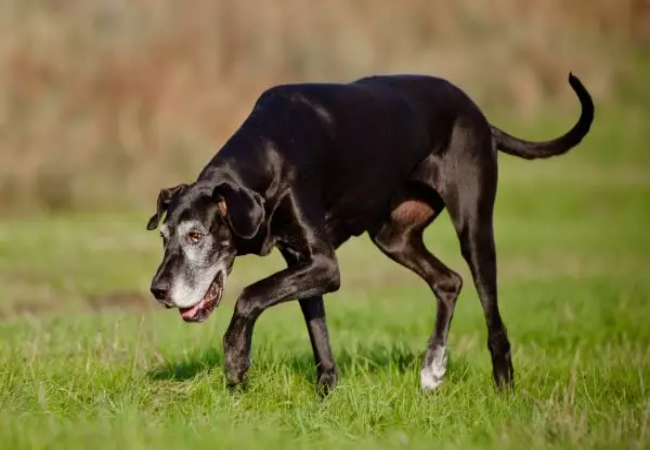Bone Problems in Dogs: Vet‑Approved 2025 Guide to Recognition & Care🦴🐶

In this article
Bone Problems in Dogs: Vet‑Approved 2025 Guide to Recognition & Care🦴🐶
By Dr. Duncan Houston BVSc
From puppies to seniors, dogs can develop bone issues—ranging from growing-related inflammation and fractures to degenerative arthritis or even cancer. This 2025 vet-backed guide helps you understand common bone disorders, spot symptoms early, and access effective treatments so your pup stays strong and comfortable. 🩺🐾
1️⃣ Common Bone Disorders by Life Stage
- Puppy growth issues: Panosteitis (“growing pains”): shifting-leg lameness with warmth and discomfort. Hypertrophic osteodystrophy (HOD): metaphyseal inflammation, fever, appetite loss—seen in fast-growing large breeds. Osteochondrosis/OCD: cartilage flaps in joints—common shoulder, elbow—causing lameness.
- Fractures & trauma: Breaks from injury—painful, swollen, sometimes visible deformity—need prompt vet X-rays and stabilization.
- Joint degeneration: Osteoarthritis—chronic, sometimes age-related stiffness and reduced mobility. Hip & elbow dysplasia—malformed joints from birth that lead to arthritis; common in large breeds.
- Bone cancer (osteosarcoma): Fast-spreading tumor in large breed dogs—signs include swelling, limping, and often severe pain.
- Other conditions: Bone infections—fever, lethargy, tender limbs. Wobbler syndrome—neck vertebral compression causing unsteady gait.
2️⃣🧭 Recognizing Warning Signs
- Limping or refusing to bear weight.
- Swelling, warmth, and pain on limb palpation.
- Fever, loss of appetite, and lethargy in young dogs (e.g., HOD).
- Visible deformities, uneven gait, or "bunny hopping."
3️⃣ Vet Diagnosis: What to Expect
- Physical exam: pain response, limb evaluation.
- X-rays or CT scans: assess fractures, tumors, dysplasia.
- Blood tests/joint taps: detect infection or inflammation.
- Biopsy/cytology: confirms bone cancer like osteosarcoma.
4️⃣ Treatment & Management
- Pain control & anti‑inflammatories are essential for arthritis, HOD, panosteitis.
- Stabilization and surgery for fractures, dysplasia, severe OCD, or limb tumors.
- Cancer care: often includes amputation, chemo, or radiation.
- Supportive therapy: weight management, joint supplements, low-impact exercise (like swimming), physical therapy, laser, stem cell interventions.
5️⃣ Long-Term Care & Prevention
- Breed screening (e.g. hip/elbow) for at-risk dogs.
- Moderate calcium & vitamin intake to prevent growth issues.
- Healthy weight and tailored exercise routines.
- Regular vet check-ups to catch early joint degeneration or bone disease.
📊 At‑A‑Glance Table
| Condition | Breed/Age Risk | Key Signs | Vet‑Recommended Care |
|---|---|---|---|
| Panosteitis | Large puppies | Shifting-leg lameness, warmth, mild fever | Pain relief, rest |
| HOD | Large puppies 2–7 mo | Swollen metaphyses, fever, discomfort | Anti‑inflammatories, fluids |
| Fractures | Any dog | Limping, deformity, swelling | X-ray, splint/surgery |
| OCD/objective cartilage | Large breed pups | Lameness, joint pain | Diagnosis + surgery/rest |
| Dysplasia/arthritis | Large breeds, seniors | Stiffness, difficulty rising | Weight loss, meds, PT |
| Osteosarcoma | Large/giant breeds | Swelling, severe pain, possible fracture | Amputation, chemo, pain management |
| Bone infections | Any | Fever, lameness, pain | Antibiotics, sometimes surgery |
| Wobbler syndrome | Great Danes, Dobermans | Wobbly gait, neck pain | Imaging, surgery/med management |
🔍 Final Thoughts
Bone problems in dogs aren’t limited to old age—they can start in puppyhood and vary widely in severity. Timely vet check-ups, weight control, and tailored exercise/support can help your dog enjoy full, active years. Any persistent lameness or swelling warrants professional evaluation. 🐾❤️
Need help identifying a limp or choosing okay therapies? Download the Ask A Vet app for instant expert insight, care planning, and therapeutic guidance anytime. 📱🐶






